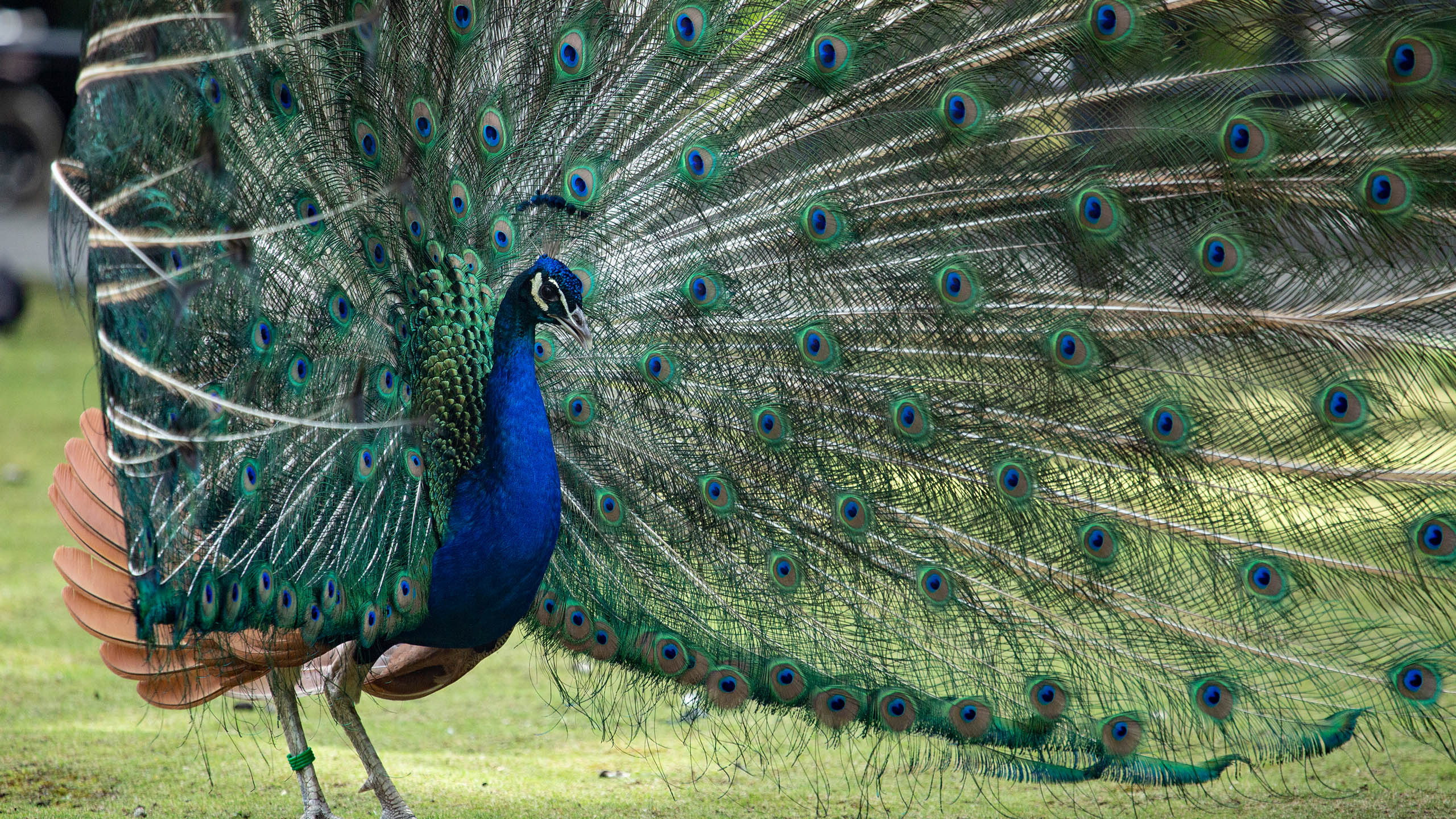
Common peafowl
Pavo cristatus
Common peafowls have been kept as decorative birds in parks and gardens for at least 4,000 years. The species originates from India, where it is still considered a holy bird. Common peafowl give out loud cries as warnings to fellow members of their species, and to other species facing imminent danger from animals such as tigers or leopards.
The Common peafowl thrives in small flocks. In the spring, the male peacock establishes its own territory and protects it against rivals by displaying its ornate train. After the nesting season, males let their trains down and live peacefully together. The peahen is much more inconspicuous than the peacock.
Peafowls are related to chicken, pheasants, quails and other galliform birds. The Common peafowl likes living on the ground, but sleeps safely in a tree at night.
Peafowl have been held at Korkeasaari Zoo for a very long time, since early 1900s.
Bevarande
There are three species of peafowl. The common peafowl, or Indian peafowl, is the best known of the peafowls. Although the common peafowl is doing well, the other two species are classified as endangered.
Living in the Congo rainforests, the Congo peafowl (Afropavo congensis) is the least known species of peafowl. Much about the life of this species is still unknown. In appearance, the Congo peafowl is reminiscent of a young common peafowl whose colouring and tail feathers are not yet fully developed. The species shares features
with both the common peafowl and the guinea fowl. The Congo peafowl has become rare, threatened by habitat destruction due to logging, mining and agriculture. Protected areas and local conservation and
research projects, as well as rearing, are ways of conserving the species.
The green peafowl (Pavo muticus) is the large eastern cousin of the common peafowl. The male green peafowl’s tail is even longer than that of the common peafowl – with its tail feathers, the green peafowl can measure up to 3 metres! The formerly wide distribution of the green peafowl in Southeast Asia is now reduced and fragmented. The main threat is habitat destruction. Hunting for feathers and meat has also contributed to a sharp decline in the population. Crossbreeding with domesticated common peafowls also threatens the wild population of green peafowls. Protected areas, restrictions on hunting and trade, rearing and reintroduction into the wild, as well as environmental education are all ways of conserving the species.
Seuraavat ruokinta-ajat
25.10.2025
Klo: 12:00
26.10.2025
Klo: 12:00
01.11.2025
Klo: 12:00
02.11.2025
Klo: 12:00
08.11.2025
Klo: 12:00
09.11.2025
Klo: 12:00
Endangerment

Distribution
Habitat
Diet
Size
Lifespan
Up to 25 years
Scientific classification
Order: Galliformes
Family: Phasianidae